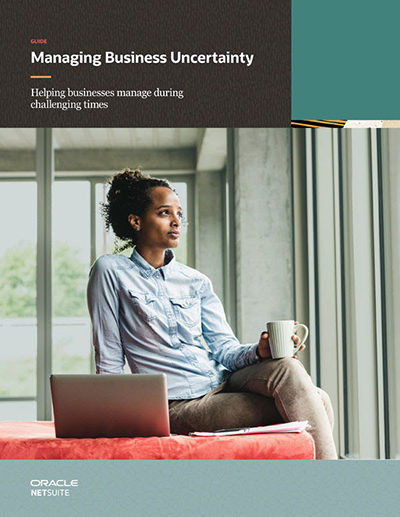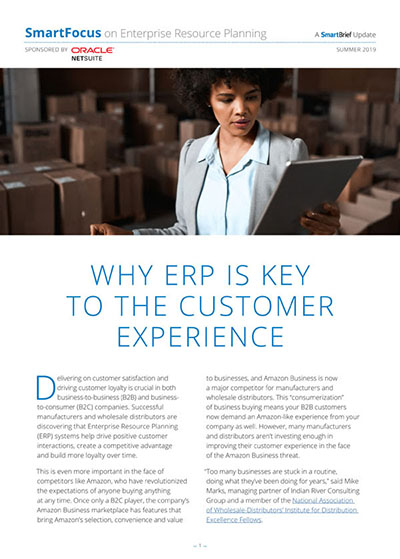Five Steps to Excellence in B2B eCommerce

According to a Forrester study, the U.S. B2B e-commerce is projected to grow from $780 billion in 2015 to $1.13 trillion by 2020, and companies that adopt a customer-centric approach to business are poised to capitalize on the ecommerce growth opportunity.
By now, most companies offer B2B customers the simplicity and convenience of e-commerce.
In fact, a Forrester Consulting study found that 72% of mid-market B2B sellers across the U.S., Europe and Australia derive at least one-quarter of revenue from online sales.
But not all B2B websites are created equal.
As the e-commerce channel matures, the gap is widening between companies that run a basic, often clunky website and those leaders that are raising the bar with next-generation e-commerce that delights B2B buyers, expands reach and drives new customer acquisition and sales.
Understanding changing customer needs and sizing up the performance of your e-commerce channel are critical to long-term success.
“B2B sellers who ignore their customers’ online preferences risk losing market share to digital-forward competitors in the coming years.” Forrester
So what distinguishes the winners from the also-rans in e-commerce?
The best businesses have connected the front-end customer experience with back-end processes of inventory management, order processing, fulfillment and returns to deliver a seamless, transparent and cost-efficient experience that benefits both buyer and seller.
Many companies, however, continue to rely on disparate standalone applications across departments, leaving customer and back-end information marooned on data islands.
That drives up administrative costs and hurts efficiency, visibility and customer satisfaction.
In its study, Forrester found that 38% of B2B sellers had no integrations between their e-commerce front-end and standalone systems.
Forty percent had manually integrated e-commerce with back-end ERP - but only 27% were “very satisfied” with the results.
The Move to ‘Single-Stack’ Commerce
As an alternative, Forrester found significant interest in a “single-stack” approach to e-commerce - that is, a unified platform that includes website, CRM, financials, inventory and order management, warehousing and fulfillment.
Sixty-two percent of Forrester respondents said they plan to implement a single-stack platform in their next e-commerce iteration.
Forrester also found that B2B sellers using a single-stack platform today (21% of 352 companies surveyed) realized greater per-customer profitability, better cross-sell and upsell, improved customer acquisition and satisfaction, and more accurate inventory and fulfillment processes.
As Forrester put it, “Single-stack approaches for mid-market firms feature a degree of scalability and require less resources internally for maintenance.”
A single-stack approach also positions a company to focus on five key steps for e-commerce excellence, without the need for costly and time-consuming manual integrations:
1. Adopt customer-centric commerce. Businesses have traditionally been aligned around channels and departments - procurement, direct sales, e-commerce, inventory, fulfillment, customer service and more - with each unit running its own business application. Because those systems don’t talk to each other, it’s difficult for the business to function cohesively to meet customer needs.
A customer-centric approach reorients the business around buyers based on more unified processes and systems that improve efficiency and visibility across the board. For e-commerce, that can mean faster shipping because manual steps and paper trails are eliminated. Customer service is improved because a unified platform gives sales and service reps real-time visibility into orders.
2. Run an advanced B2B e-commerce website. The best B2B websites deliver a B2C-like experience, with features such as faceted navigation, mouseover zoom, “searchandizing” and responsive design that renders a site well on a mobile device. B2B buyers are consumers, too, in their personal lives, and expect from businesses the same rich shopping experience they enjoy on the best retail sites.
At the same time, the website needs to offer functionality specific to B2B buyers, such as inventory availability, account management, order tracking and history, role-based permissions, invoice and ACH payments, single-click reordering and more. An attractive, easy-to-use website with robust B2B functionality is a proven way to build loyalty and repeat business.
3. Real-time business visibility. For decades, companies got by with outdated data and informed guesswork in managing inventory and pursuing sales channels. This lack of visibility meant undetected costs, operational inefficiencies and missed opportunities. With a single-stack platform, companies can monitor the business across multiple dimensions, supporting high-caliber e-commerce.
For instance, real-time visibility into available inventory helps avoid costly stock-outs that can ruin a customer’s e-commerce order. Pricing and profitability are enhanced when a company can determine the true cost of product, including shipping, warehousing and discounts.
4. Cultivate and use customer insights. Businesses capture huge volumes of customer information, but it’s not easily put to use if it’s scattered in buckets across the enterprise. Customer-centric companies are utilizing that information for a 360-degree customer view to better understand and anticipate buyer needs. With it, they can drive sales based on product and channel preferences, site activity, seasonal patterns, purchasing frequency and likely replenishment needs.
5. Disrupt, innovate and scale. By making front- and back-end e-commerce processes seamless, companies improve efficiency not just for customers, but for their businesses. That liberates resources to disrupt the market by investing in customer-centric innovations and scaling the business across geographic borders, building a go-to brand that wins both new and repeat business.
Download: Tomorrow’s Mid-Market B2B Ecommerce Will Take Place in the Cloud
Lindemann Chimney, a chimney supplies and services company, has improved its B2B e-commerce channel and overall operational efficiency since replacing disparate applications with a cloud-based single-stack platform. Call center volumes are on track to plummet 75% because of e-commerce orders, saving time and money for Lindemann and its customers.
“We now have the ability to process and serve more orders per day with the same headcount,” said David Ullmann, Lindemann’s director of e-commerce. “This will allow us to continue our 30% year-over-year growth trajectory for years to come.”
In the U.S. alone, B2B e-commerce is projected to grow from $780 billion in 2015 to $1.13 trillion by 2020, according to the Forrester study, “Tomorrow’s Mid-Market B2B Ecommerce Will Take Place in the Cloud.” Companies that adopt a customer-centric approach to business are poised to capitalize on the ecommerce growth opportunity.
Tomorrow’s Midmarket B2B eCommerce will Take Place in the Cloud
“How satisfied are you with how well-integrated your ERP system is with your eCommerce solution?”
Base: 352 global midmarket B2B eCommerce decision-makers (percentages may not total 100 because of rounding)
Source: A commissioned study conducted by Forrester Consulting on behalf of NetSuite, May 2016
Article Topics
NetSuite News & Resources
Future-proofing with warehouse management systems (WMS) The CFO’s Guide to Planning and Analysis The 7 Habits of Highly Effective CFOs The 80/20 CFO The CFO’s Guide to Recurring Revenue Overstocks, Stockouts and Backorders, Oh My! Make or Break Business KPI Metrics More NetSuiteLatest in Technology
Apple Overtaken as World’s Largest Phone Seller Walmart Unleashes Autonomous Lift Trucks at Four High-Tech DCs Talking Supply Chain: Procurement and the AI revolution 80% of Companies Still Unsure How to Best Leverage AI, Study Finds Supply Chain Stability Index: “Tremendous Improvement” in 2023 AI Not a Priority for Retailers and CPG Companies How Video Games Can Enhance Your Transformation Project More Technology















